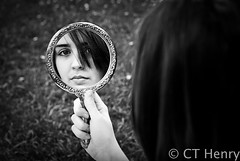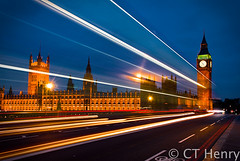Planning to take photos on vacation or a business trip? Here’s a checklist of ten items that might help you on your next photo excursion.
When planning a shoot, it’s important to research and prepare your gear.
RESEARCH –
1. Check the weather forecast.  The forecast will tell you two things: what clothes to take and what kind of light to expect. On a recent trip to New Mexico, I knew it was going to be cold, so I purchased a pair of REI convertible mittens that allow me to use my fingers when shooting. The predicted skies also allow me to plan for different types of light. If it’s very sunny, I’ll avoid the mid-day hours when it’s too bright. The best conditions for photography are partly or mostly cloudy. On partly cloudy days, I’ll shoot landscapes, and on mostly cloudy days, I’ll look for details or take portraits because the light is diffuse and more flattering.
The forecast will tell you two things: what clothes to take and what kind of light to expect. On a recent trip to New Mexico, I knew it was going to be cold, so I purchased a pair of REI convertible mittens that allow me to use my fingers when shooting. The predicted skies also allow me to plan for different types of light. If it’s very sunny, I’ll avoid the mid-day hours when it’s too bright. The best conditions for photography are partly or mostly cloudy. On partly cloudy days, I’ll shoot landscapes, and on mostly cloudy days, I’ll look for details or take portraits because the light is diffuse and more flattering.
2. Find out the time and direction of sunrise and sunset.  Most travel photographers shoot during the “Golden Hours”: the half-hour before and after sunrise and sunset. The light at this time has a golden hue and is less harsh than at other times in the day. Warm hues are also more captivating to our eyes. I use various tools to let me know the time and direction of sunrise and sunset. This allows me to plan for how the light will fall on the land. I highly recommend downloading The Photographer’s Ephemeris App for your computer or iPhone. I don’t go anywhere without it.
Most travel photographers shoot during the “Golden Hours”: the half-hour before and after sunrise and sunset. The light at this time has a golden hue and is less harsh than at other times in the day. Warm hues are also more captivating to our eyes. I use various tools to let me know the time and direction of sunrise and sunset. This allows me to plan for how the light will fall on the land. I highly recommend downloading The Photographer’s Ephemeris App for your computer or iPhone. I don’t go anywhere without it.
3. Visit travel guide or visitor information sites. I always Google the location and read travel information about the area. First, it gives me an idea of what I can expect: the local culture, places of interest, and maybe special events or festivals that maybe happening while I’m there. Before I went to New Mexico, I found several driving tours on a travel site, and they were definitely the best part of the trip. Second, I’m able to make an itinerary and prioritize the areas that I’d like to see the most.
4. Look at photos of the area. Go to Flickr and Google and browse for images of the area. This usually gives me a sense of what the area looks like, and I specifically look for interesting subjects to shoot. Although Flickr is a good place to start, I find the most helpful part of the planning stage is visiting local photographer’s websites. Their portfolios give me a better idea of what’s actually possible than some of the more amateur photos on Flickr.
5. Print out maps of the region –  Another helpful aid is a topographical map, especially for shooting landscapes. I usually print out a topographical map from Google maps. On my trip to New Mexico, the map helped me understand the terrain, which consisted of several mountain peaks. I was able to see where the mountains were in relation to setting sun. I also print out maps of the area for driving purposes.
Another helpful aid is a topographical map, especially for shooting landscapes. I usually print out a topographical map from Google maps. On my trip to New Mexico, the map helped me understand the terrain, which consisted of several mountain peaks. I was able to see where the mountains were in relation to setting sun. I also print out maps of the area for driving purposes.
6. Make shot list. After all this research, I jot down a few ideas of photos that I’d like to take in my notebook. For instance, I wanted to take a photo of the mountains with the moon in the background. I also wrote down: vivid colors of the Southwest, old people, young people, religion, food, something odd or whacky, signs, skiers, a low-angle shot of old cars, night shots of the village and mountains, and bridges.
GEAR –
7. Charge batteries. If you have a DSLR camera, make sure to travel with fully charged batteries. If you use a point-and-shoot camera, make sure to take extra batteries with you. In cold weather, batteries loose their charge at a faster rate. I always take an extra battery and my charger with me on all trips.
8. Pack your bag.  Once you’ve drawn up a shot list, you will need to decide what camera accessories to take. For landscapes, take a wide-angle lens. For shooting details and portraits, take a telephoto lens. I also include my cleaning kit as well as my trusty tripod. Some other accessories to consider are: a flashlight, compass, memory card case, speedlight, mini-tripod/gorillapod, and granola bars. (Yes, always take a snack. Trust me.)
Once you’ve drawn up a shot list, you will need to decide what camera accessories to take. For landscapes, take a wide-angle lens. For shooting details and portraits, take a telephoto lens. I also include my cleaning kit as well as my trusty tripod. Some other accessories to consider are: a flashlight, compass, memory card case, speedlight, mini-tripod/gorillapod, and granola bars. (Yes, always take a snack. Trust me.)
9. Clean camera and lenses. Once the batteries are fully charged, you can safely clean the DSLR’s sensor. I also wiped down my camera body and clean my lenses. (I’ll write about how to do this properly in a future post.)
10. Reformat your memory cards. You should always have more than one memory card. Before you trip, make sure to reformat your memory cards, so when you’re finished shooting with one, you can easily slip in another one knowing that it’s already formatted. There’s nothing worse than putting in a new memory card and having to wait for it to format. It’s a sure-fire way of missing the shot.
Have a great trip!!!







